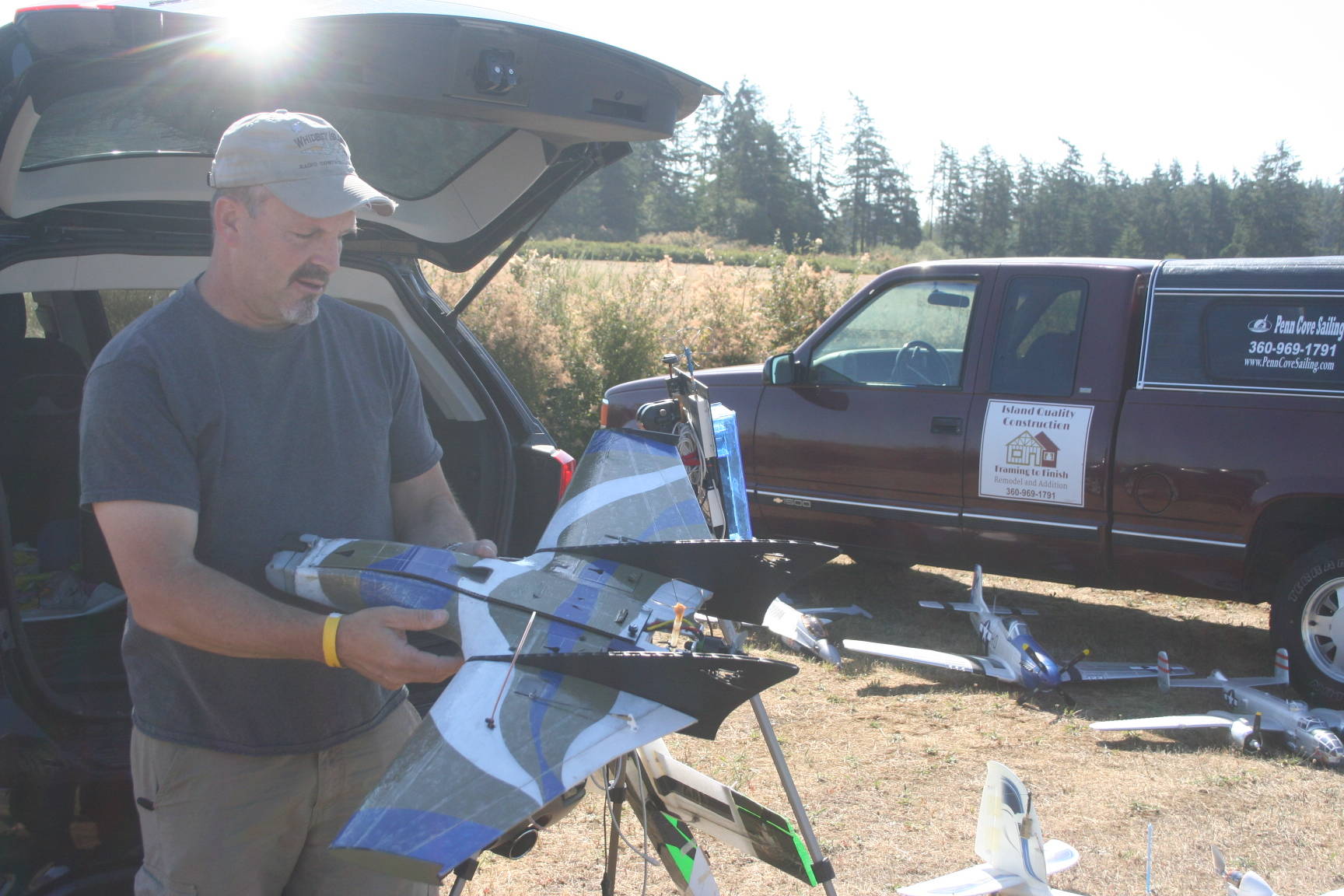Something other than military jets are taking to the skies at the Navy’s Outlying Field Coupeville.
Something very similar, but much smaller and a bit quieter.
“You could call this down-sizing,” said Brien Lillquist, president of the Whidbey Island Radio Control Society, or WIRCS.
WIRCS members get together to fly their model airplanes. On a warm, sun-soaked Saturday morning, about 10 men went to OLF Coupeville to stretch their wings.
“I think it’s something that goes back to when they were a kid,” Lillquist said of the club’s appeal.
That’s certainly true for Vernon Brisley of Greenbank, who said he was age 8 or 9 when he first became interested in flying.
“I came back to flying hobby about 50 years (later),” he said, during his first Saturday out with the club.
Amid models of old-time aircraft, like a WII-era Japanese Zero and a Douglas DC-3 to the alien spaceship-looking prototypes good for mapping fields, the club’s members talked shop about average cruising speed and weather observations.
Mechanical sounds of engines whirring to life and landing wheels rolling over the ground created a scene that felt like an alternate-reality where size proportions were flipped.
“As soon as I was born I think I was already into it. … I’ve been flying since 1986,” said Oak Harbor resident Scott Storer.
He came with a variety of aircraft on Saturday and had some of the more unusual-looking ones. He also had cameras on his planes that offer him a bird’s-eye view of the island.
Lillquist explained that club members are restricted to flying under 400 feet to stay out of controlled airspace, and they are required to be members of Academy of Model Aeronautics, so they are covered by insurance in case a plane crashes and damages anything.
Lillquist said that members also have speed restrictions of 200 mph.
“But that’s only the jets, really,” he said.
There were no jets that day, but almost everyone brought multiple aircraft with them to fly “as a backup,” according to the club’s vice president, Bill Diekman.
The group can teach prospective fliers the rules of the sky, too.
“We have people who come to us who have absolutely no experience, and we have several models that we take them out and train them on,” Lillquist said.
“Anyone can fly — the hard part is landing,” said Mark Saia.
Saia brought along 11 aircraft that day. He got his first plane, a shiny DC-3, for free from another club member during a meeting. He’s on version two of the plane now. The first one crashed when he was landing it for the first time.
It had balance issues, he said.
“The learning curve is steep,” Diekman said. “It’s just like flying the real thing, but a lot less expensive.”



